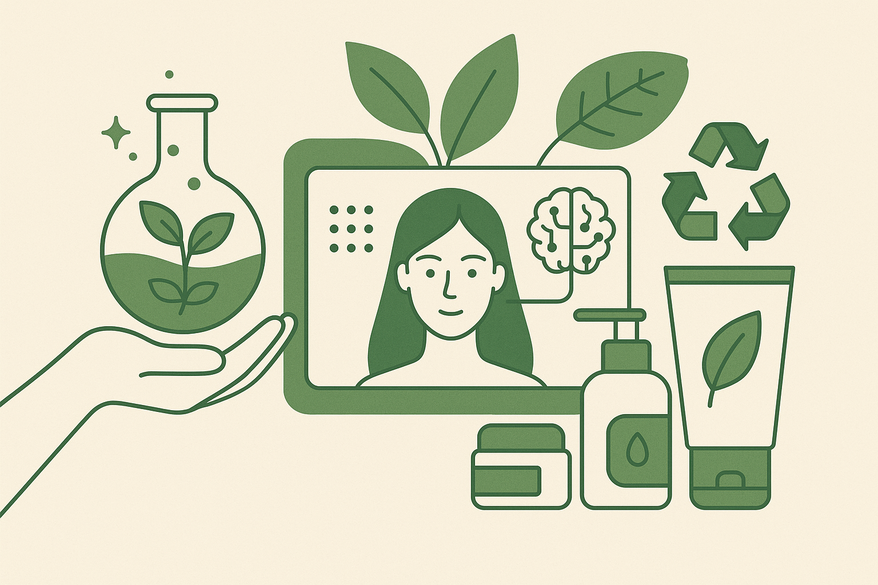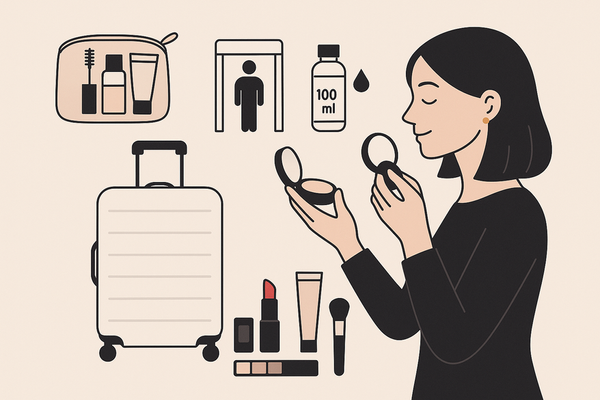The Ultimate Guide to Eco-Friendly Beauty Tech Integration
Explore the future of eco-friendly beauty tech integration with lab-grown actives, AI personalization, and sustainable packaging transforming the industry.

Estimated reading time: 12 minutes
Key Takeaways
- Eco-friendly beauty tech merges digital innovation with sustainability to reduce environmental impact.
- Key drivers include consumer demand, regulatory pressure, and advances in biotechnology.
- Core components cover sustainable ingredients, AI personalization, AR try-ons, and eco-packaging solutions.
- Benefits span reduced waste, lower carbon emissions, and enhanced customer experience.
- Challenges involve high R&D costs, scale-up hurdles, and risk of greenwashing.
Table of Contents
- Introduction to Eco-Friendly Beauty Tech Integration
- The Evolution of Eco-Friendly Beauty Tech Integration
- Key Components of Eco-Friendly Beauty Tech Integration
- Benefits of Eco-Friendly Beauty Tech Integration
- Challenges of Eco-Friendly Beauty Tech Integration
- Future Beauty Tech Integration Trends
- Conclusion
- Additional Resources
Introduction to Eco-Friendly Beauty Tech Integration
Imagine browsing your favorite beauty app, selecting a moisturizer that’s been lab-tested for minimal waste, and seeing its carbon footprint in real time. Eco-friendly beauty tech integration is the adoption of sustainable technologies and digital solutions designed to curb the environmental and social impact of cosmetics. Driven by 60% of shoppers demanding transparent sourcing and ethical claims, along with evolving regulations, the industry is embracing lab-grown actives, AI-powered skin analysis, refillable systems, and more.
The Evolution of Eco-Friendly Beauty Tech Integration
Early Era (Pre-2000s)
- Mass production prioritized volume over environmental considerations.
- Chemical formulations often ignored waste and pollution.
- Minimal regulations existed for biodegradability or animal testing.
Transition Toward Eco-Friendly Initiatives
- Consumer advocates and bloggers exposed harmful ingredients and wasteful packaging.
- Regulatory bodies introduced labeling laws, microplastics bans, and cruelty-free standards.
- Biotech labs began producing active ingredients like hyaluronic acid via fermentation.
Case Studies of Sustainable Brand Integrations
Algenist: Utilizes patented Alguronic Acid from lab-grown algae, bypassing wild harvesting and protecting marine ecosystems.
Evolved By Nature: Produces petroleum-free silk peptides via microbial fermentation, eliminating toxic solvents.
Unilever + Geno: Develops sustainable surfactants to replace palm oil, closing the loop on ingredient cycles.
Key Components of Eco-Friendly Beauty Tech Integration
Sustainable Ingredients
Lab-grown actives—such as hyaluronic acid and collagen—are produced in bioreactors, requiring 50% less water and no deforestation. This shift eliminates reliance on wild harvesting and intensive agriculture.
Technological Innovations Driving Sustainability
- AI-Driven Personalization: Machine learning analyzes skin images to recommend precise formulations, reducing trial-and-error waste.
- AR Virtual Try-On: Augmented reality mirrors and apps let users test shades online, cutting returns and unsold inventory.
- Digital Transformation: Eco-hosting and carbon-neutral data centers power brand websites, while lean UX design minimizes energy per page view.
Eco-Friendly Packaging Solutions
- Biodegradable polymers that break down in industrial composting.
- Recycled glass and paper pulp for low-energy production and high recyclability.
- Refillable airless pumps creating closed loops and reducing single-use waste.
- Local sourcing and upcycling to lower transport emissions.
Personalized Digital Tools
Platforms like Makeup Check AI leverage AI to analyze skin and makeup usage, guiding consumers toward sustainable products tailored to their unique profiles.
Benefits of Eco-Friendly Beauty Tech Integration
Environmental Benefits
- Waste reduction: Refillable systems and concentrates cut packaging volume by 40%.
- Water savings: Lab-grown actives use up to 50% less water than traditional farming.
- Lower carbon footprint: Biotech processes release up to 30% fewer greenhouse gases.
Social & Economic Benefits
- Supply-chain transparency through blockchain and QR codes for full traceability.
- Ethical production standards—vegan, cruelty-free, and fair-trade—boost consumer trust.
- Local job creation in small-scale biotech labs and refill stations.
Enhanced Customer Experience & Innovation
- Personalized routines lead to 25% higher engagement and repeat purchases.
- High-performance, clean formulas meet efficacy expectations without harsh chemicals.
- Digital engagement via AR try-ons and real-time feedback fosters loyalty.
Challenges of Eco-Friendly Beauty Tech Integration
Cost & Accessibility
Developing biotech ingredients can exceed $5 million per formula, and eco-tech brands often carry a 20–30% price premium.
Technological Limitations & Research Needs
- Scaling lab yields for cultured proteins remains challenging versus plant extraction.
- Natural actives can degrade faster, demanding advanced preservation methods.
- Continuous investment in green chemistry is essential for safer solvents and catalysts.
Balancing Eco-Friendly with Luxury & Performance
- Formulating luxury textures and scents from natural ingredients requires complex innovation.
- Consumers expect 2–3 year shelf lives, pushing chemists to find mild preservatives.
- Brands must avoid greenwashing by providing transparent data and proof points.
Future Beauty Tech Integration Trends
Upcoming Technologies
- CRISPR-engineered biopolymers for customized performance and biodegradability.
- Lab-cultured microbiome boosters grown in bioreactors to support skin health.
- AI diagnostics and wearables—smart patches measuring hydration, pH, and UV exposure in real time.
Shifts in Consumer Behavior & Market Dynamics
- 75% of Gen Z will favor brands with measurable sustainability impact.
- Refill stations and subscription models in malls and spas are projected to grow by 40%.
- Carbon calculators and ingredient trackers will become standard tools for shoppers.
Strategic Recommendations for Brands
- Partner with biotech startups for exclusive pipelines of sustainable actives.
- Integrate AR/AI platforms early to reduce sample waste and personalize experiences.
- Reengineer supply chains with local manufacturing, refill centers, and take-back programs.
Conclusion: Eco-Friendly Beauty Tech Integration
By combining lab-grown actives, AI personalization, AR try-ons, and biodegradable packaging, brands can deliver high-performance products with minimal environmental impact. While the roadmap includes challenges around cost, scale, and authenticity, strategic investments in green chemistry, transparent digital tools, and consumer education will set sustainable beauty tech as the industry standard.
Additional Resources
- Future of Beauty: 2025 Cosmetic Industry Trends
- Top Eco-Friendly Beauty Products: 2024 & 2025 Guide
- Top 10 Sustainable Beauty Trends in 2025
- 6 Top Beauty Industry Trends (2025 & 2026)
- 6 Game-Changing Beauty Industry Trends
FAQ
- What is eco-friendly beauty tech integration?
It refers to the adoption of sustainable digital solutions and biotech innovations—such as AI-driven personalization, lab-grown actives, and refillable packaging—to minimize the beauty industry’s environmental impact. - How does AI enhance sustainability in beauty?
By analyzing skin data, AI recommends targeted formulations, reducing product waste and the need for multiple trial-and-error purchases. - Can eco-friendly beauty tech be affordable?
While initial R&D costs are high, scaling innovations and consumer demand for sustainable products can drive down prices over time. - How can consumers support this movement?
Choose brands with transparent supply chains, refill programs, eco-packaging, and measurable sustainability metrics. - Where can I learn more about clean beauty trends?
Explore the Clean Beauty Makeup Trends guide for practical tips and product roundups.




